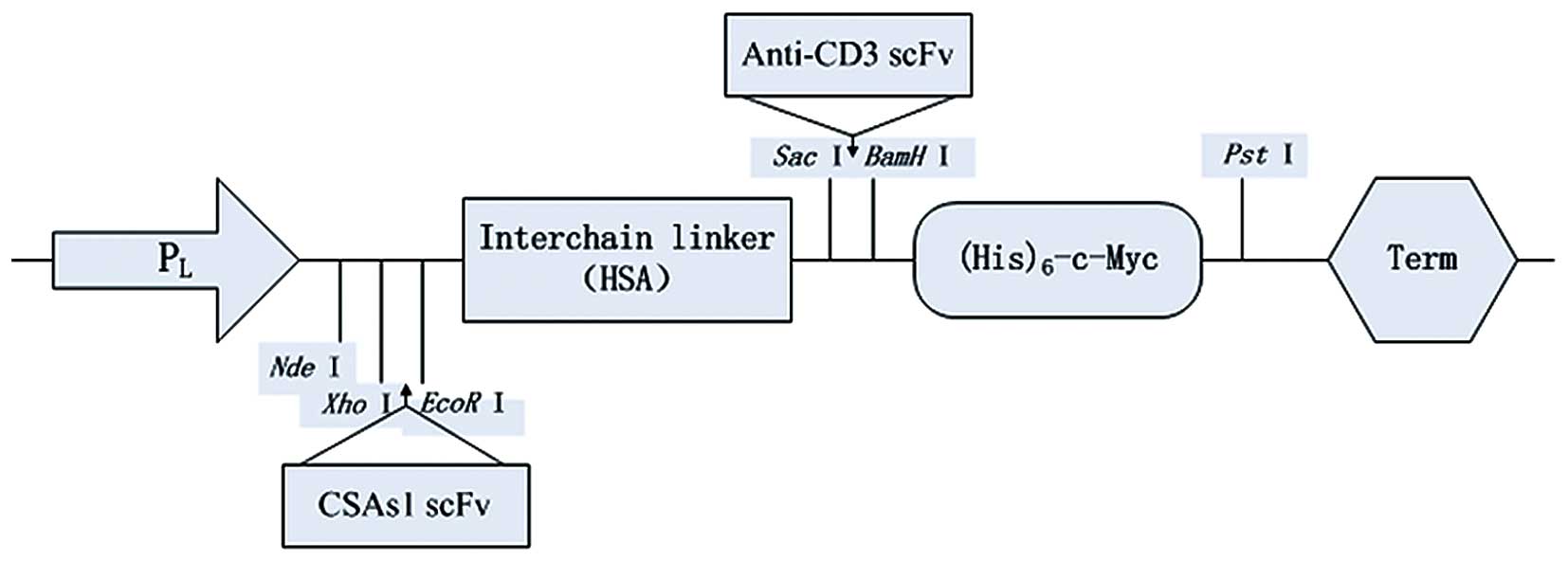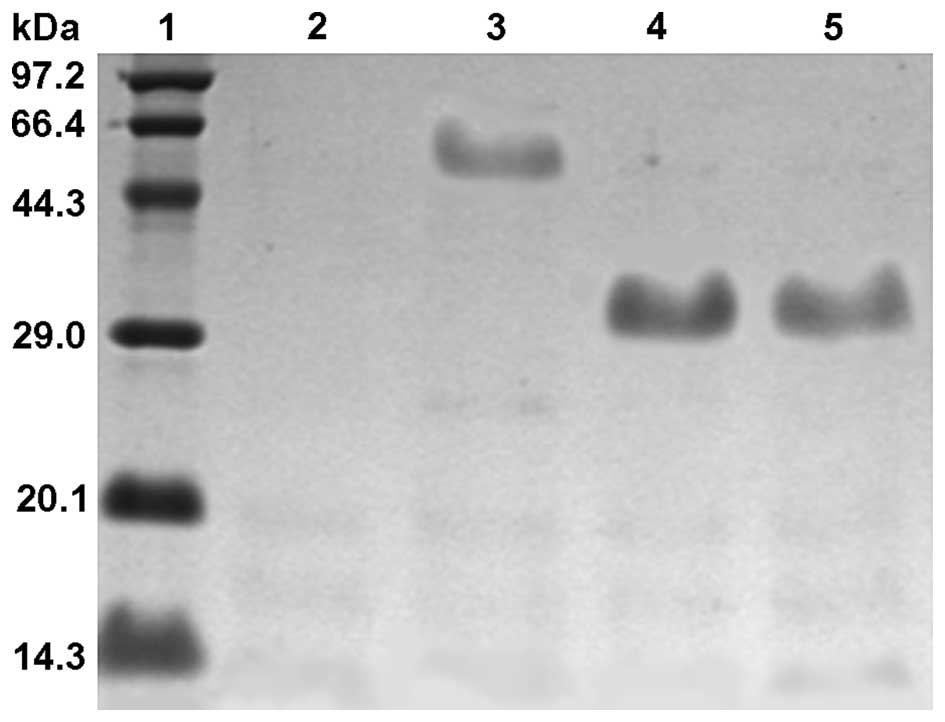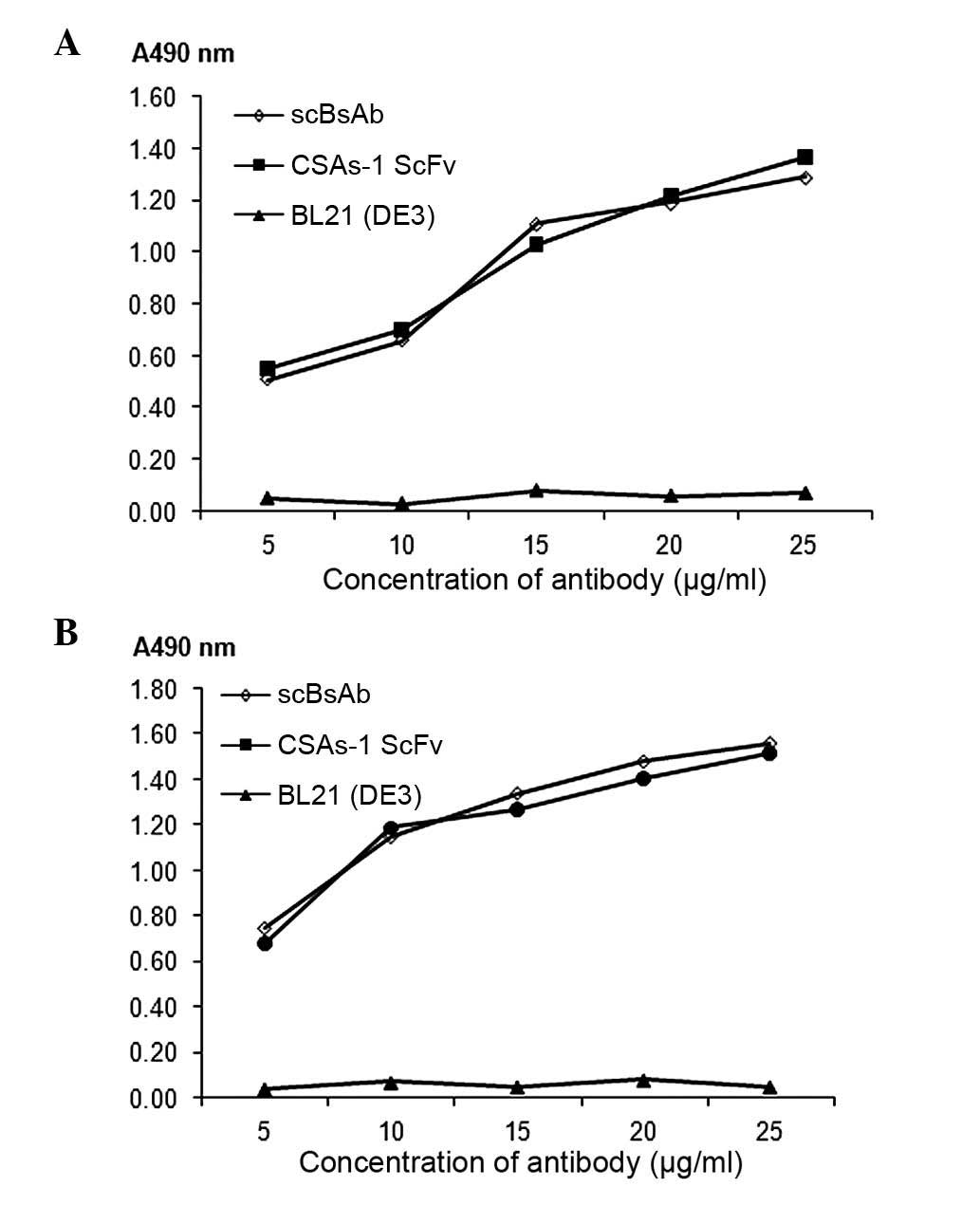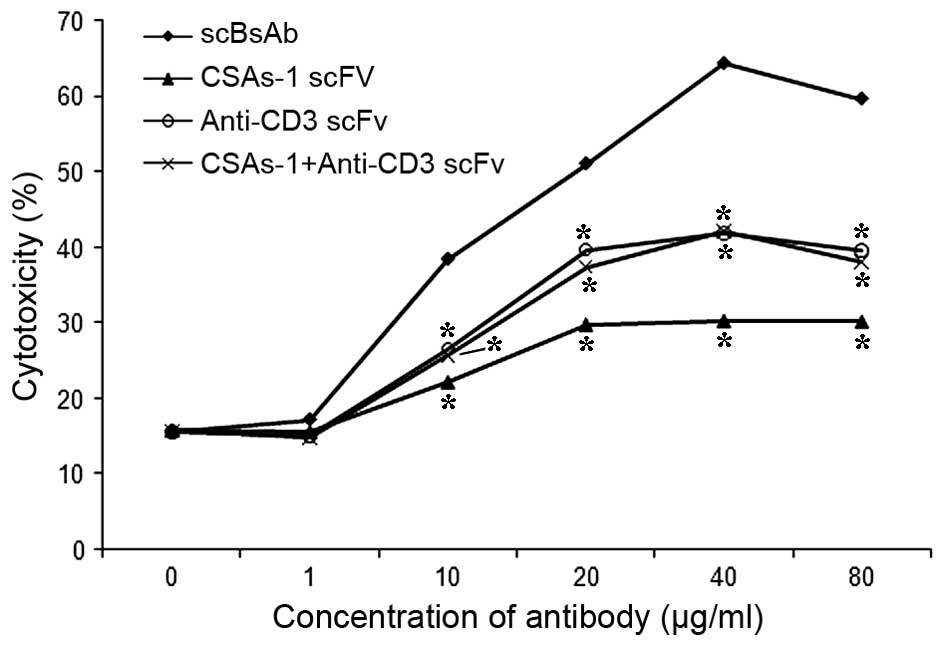|
1
|
Dillner J: Trends over time in the
incidence of cervical neoplasia in comparison to trends over time
in human papillomavirus infection. J Clin Virol. 19:7–23. 2000.
View Article : Google Scholar : PubMed/NCBI
|
|
2
|
Chames P and Baty D: Bispecific antibodies
for cancer therapy. Curr Opin Drug Discov Devel. 12:276–283.
2009.PubMed/NCBI
|
|
3
|
Urbanska K, Lynn RC, Stashwick C, Thakur
A, Lum LG and Powell DJ Jr: Targeted cancer immunotherapy via
combination of designer bispecific antibody and novel
gene-engineered T cells. J Transl Med. 12:3472014. View Article : Google Scholar : PubMed/NCBI
|
|
4
|
Dreier T, Baeuerle PA, Fichtner I, Grün M,
Schlereth B, Lorenczewski G, Kufer P, Lutterbüse R, Riethmüller G,
Gjorstrup P and Bargou RC: T cell costimulus-independent and very
efficacious inhibition of tumor growth in mice bearing subcutaneous
or leukemic human B cell lymphoma xenografts by a
CD19-/CD3-bispecific single-chain antibody construct. J Immunol.
170:4397–4402. 2003. View Article : Google Scholar : PubMed/NCBI
|
|
5
|
Makkouk A and Weiner GJ: Cancer
immunotherapy and breaking immune tolerance: New approaches to an
old challenge. Cancer Res. 75:5–10. 2015. View Article : Google Scholar
|
|
6
|
Cartellieri M, Arndt C, Feldmann A, von
Bonin M, Ewen EM, Koristka S, Michalk I, Stamova S, Berndt N, Gocht
A, et al: TCR/CD3 activation and co-stimulation combined in one T
cell retargeting system improve anti-tumor immunity.
Oncoimmunology. 2:e267702013. View Article : Google Scholar
|
|
7
|
Tang P, Li L, Zhou Y, Shen CC, Kang YH,
Yao YQ, Yi C, Gou LT and Yang JL: The preparation of VEGFR1/CD3
bispecific antibody and its specific cytotoxicity against
VEGFR1-positive breast cancer cells. Biotechnol Appl Biochem. Dec
12–2013.Epub ahead of print. PubMed/NCBI
|
|
8
|
English DP, Bellone S, Schwab CL, Roque
DM, Lopez S, Bortolomai I, Cocco E, Bonazzoli E, Chatterjee S,
Ratner E, et al: Solitomab, an epithelial cell adhesion
molecule/CD3 bispecific antibody (BiTE), is highly active against
primary chemotherapy-resistant ovarian cancer cell lines in vitro
and fresh tumor cells ex vivo. Cancer. 121:403–412. 2015.
View Article : Google Scholar
|
|
9
|
Cheng M, Ahmed M, Xu H and Cheung NK:
Structural design of disialoganglioside GD2 and CD3-bispecific
antibodies to redirect T cells for tumor therapy. Int J Cancer.
136:476–486. 2015. View Article : Google Scholar :
|
|
10
|
Löffler A, Kufer P, Lutterbüse R, Zettl F,
Daniel PT, Schwenkenbecher JM, Riethmüller G, Dörken B and Bargou
RC: A recombinant bispecific single-chain antibody, CD19 × CD3,
induces rapid and high lymphoma-directed cytotoxicity by
unstimulated T lymphocytes. Blood. 95:2098–2103. 2000.
|
|
11
|
Yang JZ, Zhang Z, Ma L, Yao XS, Zhou MQ,
Wang XB and Wang XN: Biologic properties of an anti-human ovarian
carcinoma/anti-human CD3 single chain bispecific antibody. Ai
Zheng. 24:787–791. 2005.In Chinese. PubMed/NCBI
|
|
12
|
Wang D, Wu GJ, Wang H, Wu WZ, Yang SL and
Tan JM: Comparison of biologic activity of two anti-PSA/anti-CD3
bispecific single-chain antibodies. Zhonghua Nan Ke Xue. 13:8–12.
2007.In Chinese. PubMed/NCBI
|
|
13
|
Zhou Y, Gou LT, Mu B, Liao WC, He J, Ma C,
Yao YQ and Yang JL: A fully human CD19/CD3 bi-specific antibody
triggers potent and specific cytotoxicity by unstimulated T
lymphocytes against non-Hodgkin's lymphoma. Biotechnol Lett.
34:1183–1191. 2012. View Article : Google Scholar : PubMed/NCBI
|
|
14
|
Li X, Chen W, Yang YC and Si LS:
Establishment and characterization of a new squamous cell carcinoma
cell line CS1213 from the human uterine cervix. Zhonghua Fu Chan Ke
Za Zhi. 38:614–617. 2003.In Chinese.
|
|
15
|
Kipriyanov SM, Moldenhauer G, Martin AC,
Kupriyanova OA and Little M: Two amino acid mutations in an
anti-human CD3 single chain Fv antibody fragment that affect the
yield on bacterial secretion but not the affinity. Protein Eng.
10:445–453. 1997. View Article : Google Scholar : PubMed/NCBI
|
|
16
|
Gruber M, Schodin BA, Wilson ER and Kranz
DM: Efficient tumor cell lysis mediated by a bispecific single
chain antibody expressed in Escherichia coli. J Immunol.
152:5368–5374. 1994.PubMed/NCBI
|
|
17
|
de Rock E and Taylor N: An easy method of
layering blood over Ficoll-Paque gradients. J Immunol Methods.
17:373–374. 1977. View Article : Google Scholar : PubMed/NCBI
|
|
18
|
Rossi DL, Rossi EA, Cardillo TM,
Goldenberg DM and Chang CH: A new class of bispecific antibodies to
redirect T cells for cancer immunotherapy. MAbs. 6:381–391. 2014.
View Article : Google Scholar : PubMed/NCBI
|
|
19
|
Hoffmann SC, Wabnitz GH, Samstag Y,
Moldenhauer G and Ludwig T: Functional analysis of bispecific
antibody (EpCAMxCD3)-mediated T-lymphocyte and cancer cell
interaction by single-cell force spectroscopy. Int J Cancer.
128:2096–2104. 2011. View Article : Google Scholar
|
|
20
|
Sharkey RM, Karacay H, Vallabhajosula S,
McBride WJ, Rossi EA, Chang CH, Goldsmith SJ and Goldenberg DM:
Metastatic human colonic carcinoma: Molecular imaging with
pretargeted SPECT and PET in a mouse model. Radiology. 246:497–507.
2008. View Article : Google Scholar : PubMed/NCBI
|
|
21
|
Gary R, Voelkl S, Palmisano R, Ullrich E,
Bosch JJ and Mackensen A: Antigen-specific transfer of functional
programmed death ligand 1 from human APCs onto CD8+ T cells via
trogocytosis. J Immunol. 188:744–752. 2012. View Article : Google Scholar
|
|
22
|
Stanglmaier M, Faltin M, Ruf P,
Bodenhausen A, Schröder P and Lindhofer H: Bi20 (fBTA05), a novel
trifunctional bispecific antibody (anti-CD20 × anti-CD3), mediates
efficient killing of B-cell lymphoma cells even with very low CD20
expression levels. Int J Cancer. 123:1181–1189. 2008. View Article : Google Scholar : PubMed/NCBI
|
|
23
|
Adams GP, Schier R, McCall AM, Crawford
RS, Wolf EJ, Weiner LM and Marks JD: Prolonged in vivo tumour
retention of a human diabody targeting the extracellular domain of
human HER2/neu. Br J Cancer. 77:1405–1412. 1998. View Article : Google Scholar : PubMed/NCBI
|
|
24
|
Asano R, Shimomura I, Konno S, Ito A,
Masakari Y, Orimo R, Taki S, Arai K, Ogata H, Okada M, et al:
Rearranging the domain order of a diabody-based IgG-like bispecific
antibody enhances its antitumor activity and improves its
degradation resistance and pharmacokinetics. MAbs. 6:1243–1254.
2014. View Article : Google Scholar : PubMed/NCBI
|
|
25
|
Le Gall F, Reusch U, Little M and
Kipriyanov SM: Effect of linker sequences between the antibody
variable domains on the formation, stability and biological
activity of a bispecific tandem diabody. Protein Eng Des Sel.
17:357–366. 2004. View Article : Google Scholar : PubMed/NCBI
|
|
26
|
Kragh-Hansen U, Chuang VT and Otagiri M:
Practical aspects of the ligand-binding and enzymatic properties of
human serum albumin. Biol Pharm Bull. 25:695–704. 2002. View Article : Google Scholar : PubMed/NCBI
|
|
27
|
Muller D, Karle A, Meissburger B, Höfig I,
Stork R and Kontermann RE: Improved pharmacokinetics of recombinant
bispecific antibody molecules by fusion to human serum albumin. J
Biol Chem. 282:12650–12660. 2007. View Article : Google Scholar : PubMed/NCBI
|


















